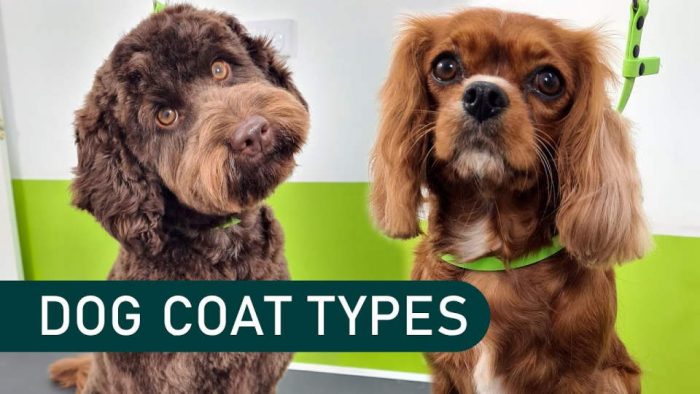How you should approach dog grooming for your beloved pet, unfortunately, does necessarily depend on how you want them to look, or even their personality, but the type of coat they have. This invariably will be determined by the breed of dog they are. Whilst some general dog grooming principles apply to all dogs, many of their grooming needs will depend on the dog’s coat type.
For this reason, it is important to know what type of coat your dog has, and it is a fact that many dog owners are unsure how they should categorise it. If you are in any doubt too, the best person to ask is a dog groomer who will know exactly what type of coat your dog has based on the dog’s breed and by seeing it when they examine your dog. From this, they can advise on and implemented the best grooming regime to suit your dog.
In truth, different groomers will identify more cog coat types than others which means that whilst one dog groomer might classify one dog as having a long, silky coat, another might just call it long. This can lead to some confusion for dog owners but be assured that the categorisation is not as crucial as a professional dog groomer knowing exactly how to groom your dog’s coat.
To give you a heads up on some of the main dog coat types and their basic grooming needs, below are some examples
Wire-Haired
Typical Breeds: Border Terrier, Irish Wolfhound, Schnauzer
Wire coats are not the softest and tend to be bristly and rough. One huge benefit of having a wire coated dog is that the tendency for it to shed is far lower than with most other coat types. Grooming rules for wire coats are that they need a comb or slick brush, should be brushed at least once per week, and should not be given excessive numbers of baths
Curly Coat
Typical Breeds: Bichon Frise, Poodle, Bedlington Terrier
These coats tend to feel soft with many dog owners regarding them as woolly. They will all have a top coat and a thicker undercoat. These tend to be high maintenance coats with brushing required daily. They are also extremely prone to matting thus the daily brushing regime. Metal combs and thick brushes are the best brushing tools to use.
Double Coat
Typical Breeds: Golden retriever, German Shepherd, Husky
These coats can be long or short. Their principal characteristics are, as the name suggests, two layers, with a thick undercoat that has short woolly-esque hairs, and a robust outer coat. Regular brushing is needed at a frequency of at least every other day to prevent matting and tangles. A rake for the undercoat and a wide-toothed comb for the outer coat are the recommended grooming tools.
Smooth Coat
Typical Breeds: Daschund, Doberman Pinschers, Bull Terrier
You might be surprised to learn that smooth coats require less grooming than most other coat types. As the dog’s fur is short, maintenance is easy which can often lead an owner to have a false sense of security. Although low maintenance smooth coats still need brushed weekly using a bristle brush. When brushing, first go against the way the coat is laying first to remove loose fur, and then brush in the opposite direction and thus with the lay of the fur.
Long Coat
Typical Breeds: Yorkshire Terrier, Shih Tzu, Afghan Hound
Often given a bad reputation due to their grooming needs, long coats might need more grooming than some others, but the level is not excessive. Daily brushing across their entire coat is required using a slicker brush and a metal comb. This will help minimise the matting that long coats can suffer from.

